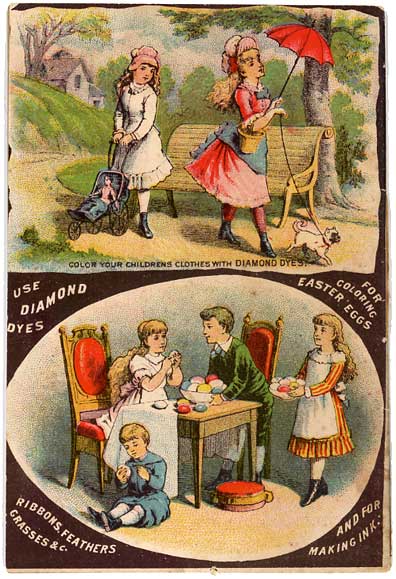Historical remedies for menstrual
period pain and problems. See more remedies here.
See modern home remedies here.
A discussion of the letter testimonials,
and their authenticity, of the Pinkham company (in a discussion of a Pursettes
ad with a letter testimonial)
See two letters to MUM about the ingredients
of her Compound, and one about the lyrics of an English
pop song, Lily the Pink, about her.
Other amazing women: Nelli
Bly, Dr. Marie Stopes,
Dr. Grace Feder Thompson
DIRECTORY of all topics (See also the
SEARCH ENGINE, bottom
of page.)
 
|
Kidney-Wort medicine in
"Cousin John's Extravagant Wife" (late 19th century)
Covers
You had to say your prayers after seeing an American doctor
when this booklet appeared in the late 19th century.
Henry Bigelow, the powerful professor of surgery at Harvard's
medical school, told Harvard's Board of Overseers that the school's medical
students couldn't pass a written examination for their M.D. degrees because
more than half could barely write. "No medical school has thought it
proper to risk large existing classes and large receipts by introducing
more rigorous standards," he said. (Information and quote from John
Barry, "The Great Influenza," 2005). (This would all change in
the last years of the century with Johns Hopkins, which rocked the medical
schools of America. A group of women donors insisted that if Hopkins wanted
their money it had to admit only extraordinarily qualified students: those
with bachelor's degrees and scientific and language training.)
So people fell prey to concoctions peddled in magazines,
newspapers and other places - hmm, sounds like today! - like this booklet
available in W.C. Bahr's store in Southport, Maine. Women's troubles - menstruation,
abnormal bleeding from the uterus, hysteria, cancers of the breast and genitals,
generally feeling lousy - occupied the attention of patent medicine makers,
including this one, most famously Mrs. Lydia Pinkham,
but also those who made Orange Blossom medicine,
Cardui, and others.
Actually the booklet sold dyes and paint; medicine - "Kidney-Wort"
- took 11 pages of 32. But the same company, Wells, Richardson, of London,
offered both.
The cover story relates how Cousin John's wife seems to be
throwing away money on colorful clothing and furnishings. The family is
incensed! But she really is dyeing the items using Wells, Richardson colors
- clever woman! as the relatives finally agree.
I wonder if some of the dye went into the Kidney-Wort? At
about this time chemists pioneered synthetic dyes and pharmaceuticals, starting
a powerful industry that reaps billions of dollars today.
 |
| Above: The cover of the 5" x 3.38" (12.8 x 8.5 cm) paper booklet.
Cousin John's wife is responsible for the bright colors. |
 |
| The girl at left, top picture, enviously eyes the effects of Wells,
Richardson's Diamond dyes on the other's clothing and parasol. |
NEXT
Covers - First inside page
- "Particularly for Ladies" - advertisement for Kidney-Wort
|